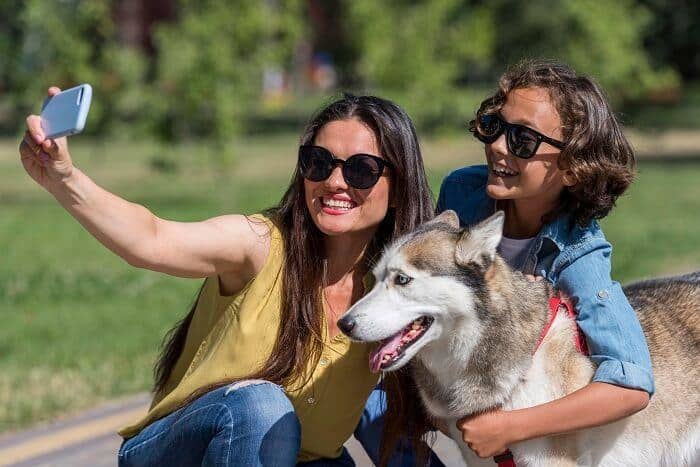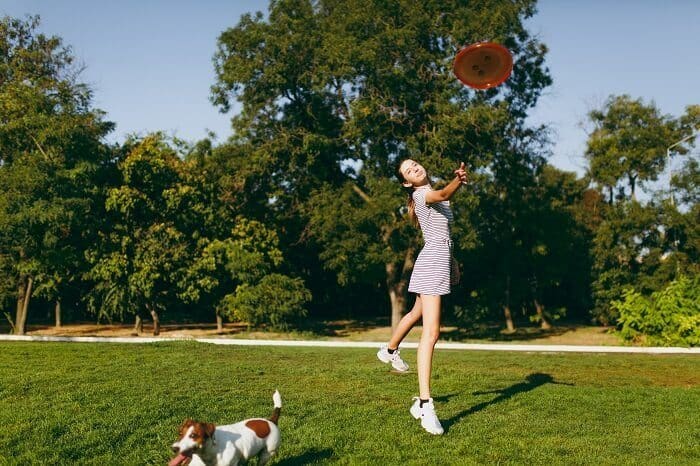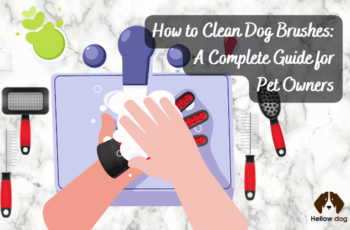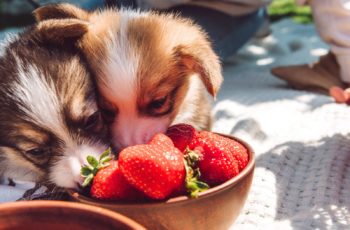All dogs love to play-even older pups in their golden years will wag their tail at the chance to play fetch or romp through a park. But why should you exercise your dog and how often should you do it? We advocate for daily play sessions for dogs of all ages. From puppies to older dogs, they all need some way to exercise to not only keep them fit and healthy, but also sane and well-behaved.
There’s an old adage: a tired dog is a well-behaved dog. We’ve all heard of owners leaving their dog at home for a couple of hours and coming home to ripped up pillows or spilled trash-chances are, if the dogs had been tired out beforehand, they would have just napped the whole time the owners were away. A dog that can release its energy through play is much less prone to engaging in boredom behaviours that can potentially be destructive.
It’s a good idea to have a library of games that you can rotate through. Some high-energy breeds, such as the especially intelligent Groodle, will need even more creative and fun games to play before they get tired. We know that it can be tough to come up with games that will adequately challenge these active dogs, so we’ve got some ideas for your next play session. Plus, a lot of these games are equally as fun for the humans, as well.
Most of these games will be best played in an open space such as a fenced backyard so that your dog doesn’t wander off. But don’t worry, we’ll give you some rainy day games also that are okay to play in your living room, house, or even in a pet portrait studio.

Playing for the Camera
Speaking of pet portraits, you could kill two birds with one stone and tire your dog out while also creating some beautiful art to adorn your home with a professional pet photography photoshoot.
You’ll find that most professional dog photographers are adept at tiring out an energetic dog with a stimulating and fun photoshoot that will not only ensure your dog then enjoys a long afternoon on their bed but also gives you a great selection of studio quality photography to choose from.
When selecting a photographer for your shoot ensure that you have a good browse of their portfolio first to ensure that the look they’re presenting is the one you’re interested in as there can be quite a contrast in styles between a natural outdoor look and the more evenly lit, tightly framed portrait of a photographic studio.
Checking the overall package value and inclusions is also an important factor as some photographers offer a cheaper shoot fee to get you interested, only to surprise you with highly priced prints, whereas some will offer an overall session fee which includes a set number of prints or digital files.

Flirt Stick games
Flirt sticks or flirt poles are meant to entice a dog to chase a lure – almost like you’re fishing for your dog. It consists of a length of stick, a short rope on the end of the stick, and a lure at the end of that rope. The lure itself can be nearly anything – most dogs are happy enough to be chasing the rope – so you can use something like your dog’s favourite toy and tie it to the end of the rope.
First, you need to get your dog to wait or get down before they get to play. Give them the “chase” or “take it” command to start the game – then try to keep the lure out of their reach for a couple of passes. Let them catch the lure and allow them to tug or munch on it for a little while as a reward – this is important so they don’t get bored and frustrated with the game.
Once they’ve tugged at the lure for a bit, tell them your “drop it” command and have them lie down or wait before restarting. Make sure that they are calm and ready to play before releasing them to chase after the toy again! We want to reinforce the behaviour of only going after the lure when we tell them they can. Take a time out if they go before being released or if the dog jumps on you in an effort to get to the toy.
What we like about this game is that it tires out dogs very quickly and the toy involved can be either bought for cheap or made on your own. Plus, this game trains dogs to listen to you even when they’re extremely riled up and excited. You can even make a cut-down size flirt stick for indoor play if you have a large enough indoor space for it.
Hide and seek
This game tests your dog’s problem-solving skills, and it’s one of the easiest to set up. You don’t even really need any toys for this to work, since you can have your dog try to find you.
To start the game, show your dog their favourite toy or high-value treat. Once they recognise it and want it, give them their “wait” or “stay” command. If it’s their first time playing this game, hide the toy or treat somewhere fairly easy to find. Give them their “find it” or “search” command to release them.
Once they find the toy or treat, give them a reward then reset and try again. If your dog goes before being released, take a time out or restart the game. Eventually, they’ll get good enough at finding the treat or toy that you’ll have to get more creative in how you hide it.
Now, if you want your dog to find you, here’s how you’ll start: just like before, have the dog stay in one spot. Find a place to hide where your dog can easily find you. It doesn’t need to be very difficult -we’ve successfully hidden from one of our dogs behind a large vase in the living room. Give your dog the same command as before to release them, calling their name if necessary.
Some dogs will need some additional help finding you-in this case, we like to call out their name every so often so that they can hone in our location. As your dog gets better at this game, either stop giving as many cues to find you or go to more hard-to-find locations.
This is a great game to play indoors as you’ll have lots of places to hide, but it’s also good in a backyard if you have trees or bushes to hide behind.

Agility games
We really like this option for very high-energy dogs as you can build an agility course for them that really gets them tired. Even if you aren’t interested in the competitive aspect of agility courses, this can be a great way to get your dog fit and healthy. Some basic obstacles are:
- A-frame – just an A-shaped ramp where your dog has to run up one side and down another
- Tunnel – a flexible tunnel the dog must run through to get to the other side
- Jumps – basically little dog hurdles
- Tire jumps – a vertically mounted tire or hoop that your dog must jump through
It’s easy enough to use everyday items to build these same obstacles while making them safe enough for your dog to use. We’ve used rolled up towels or pillows as Jumps, hula hoops for Tire jumps, and blankets spread on the ground and weighted on either side for Tunnels. The A-frame may require some basic woodwork, but most other options can be done without buying anything.
You can even use your flirt stick from our previous game to get them to run through the course. Just entice the dog to chase after the lure, then draw them toward and over the obstacles. We know that competition agility courses require dogs to only be controlled with hand gestures and verbal commands, but we’re just doing this for fun!

Retrieval games
This is the big one. Every dog owner knows how to play “fetch”: the ball or frisbee gets thrown, the dog chases after it, and (hopefully) brings it back. There are, however, ways to level up this type of game. Some dogs are also not predisposed to retrieve objects, while others (like the aforementioned Groodle) will absolutely jump at the chance to chase and retrieve something for their owners.
Adding in a bit of structure to this type of game can make it much more challenging (and rewarding!) for all types of dogs:
Entice your dog to chase after the toy or treat
This step is primarily to get non-retrieving dogs interested in the toy. Either use a toy or treat that your dog already thinks of as high-value (such as a Kong toy) or put some of the dog’s favorite treats inside or on the toy that’s going to be thrown. We’ve found that a ball smeared with some natural peanut butter works for nearly all dogs. Let them sniff the toy but don’t let them have it just yet -they’ll have to work for it.
Reward the dog for picking up the ball and bringing it back to you
Non-retrievers will need some more coaxing to get them to actually pick up the toy and bring it back. A special playtime treat or reward will teach them that they get even more goodies when they retrieve items for you. Natural retrievers, on the other hand, may need coaxing to actually let go of the toy- when they’ve come back with the toy, give them the command to drop it and immediately reward them once they do so. This will make them understand that giving up the toy means something good happens. Eventually, you won’t need to give them treats to drop the toy for you.
Advanced: waiting before retrieving
Once your dog has that basic form down, you can start introducing more challenging elements. One of our favourites is having the dog wait or stay while the toy is being thrown. This is a huge challenge for many dogs!
You may actually need a second person to help, since you’ll be restraining your dog a little bit to get them to do this. One person holds the dog on a leash with a harness or non-choking collar, while the other person gives commands and throws the toy. Get the dog to wait or stay, then throw the toy a short distance.
On the first try, most dogs will break from their wait or stay positions -have them return to the wait position and repeat the drill. Once your dog can hold the wait position for a couple of seconds after the toy has been thrown, release them while saying the fetch command. Eventually, they’ll associate being able to run and fetch with that command being given, and this game will also improve their ability to sit still in other scenarios.
Bonus: use unpredictable toys
Most retrieval toys (balls, dog Frisbees, etc.) will have a fairly predictable arc of motion. Using a toy that is inherently unpredictable will give a much greater challenge to your dog as the movements will be closer to that of a prey animal. There are many balls out there that have a non-rounded shape so that they bounce in unexpected ways – it may be worth investing in one if your dog is especially good at tracking and chasing the toys you already have.


